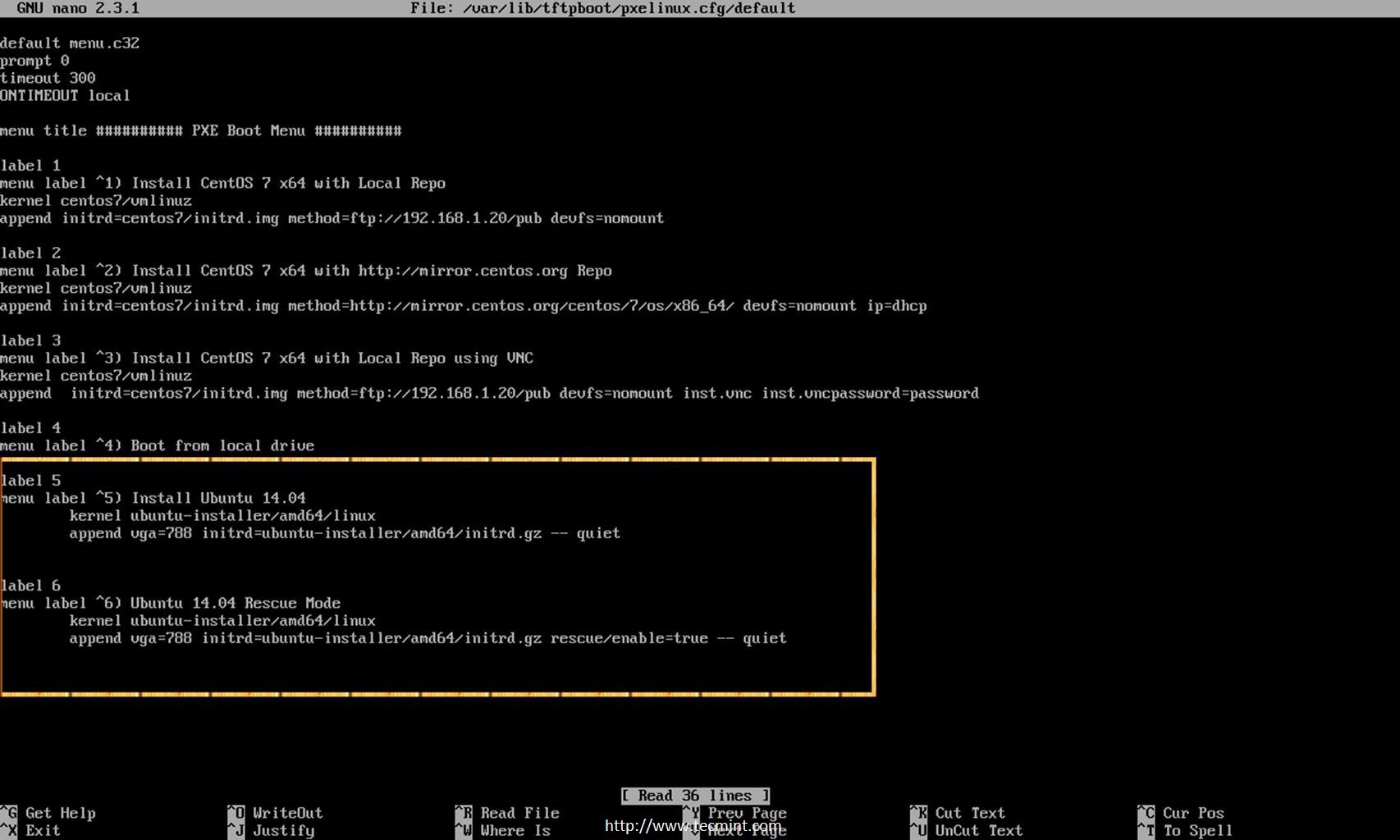Here you'll find instructions on how to install and uninstall software from the following linux releases. Run below command to install TFTP demon. After installation, tftp demon will start server automatically and listen to the network. $ sudo apt-get install tftpd-hpa Checking TFTP status: If you are unsure about the tftp status, run any of the below commands to find. $ sudo service tftpd-hpa status. In response to the command, you will get below message. How can the answer be improved?
PXE or Preboot eXecution Environment is a server-client mechanism which instructs a client machine to boot form network. In this guide we’ll show how to install Ubuntu Server via a PXE server with local HTTP sources mirrored from Ubuntu server ISO image via Apache web server. The PXE server used in this tutorial is Dnsmasq Server. Requirements: • • • Step 1: Install and Configure DNSMASQ Server 1. In order to setup the PXE server, on the first step login with the root account or an account with root privileges and install Dnsmasq package in Ubuntu by issuing the following command.

# apt install dnsmasq 2. Next, backup dnsmasq main configuration file and then start editing the file with the following configurations. # mv /etc/dnsmasq.conf /etc/dnsmasq.conf.backup # nano /etc/dnsmasq.conf Add the following configuration to dnsmasq.conf file. Interface=ens33,lo bind-interfaces domain=mypxe.local dhcp-range=ens33,192.168.1.230,192.168.1.253,255.255.255.0,1h dhcp-option=3,192.168.1.1 dhcp-option=6,192.168.1.1 dhcp-option=6,8.8.8.8 server=8.8.4.4 dhcp-option=28,10.0.0.255 dhcp-option=42,0.0.0.0 dhcp-boot=pxelinux.0,pxeserver,192.168.1.14 pxe-prompt='Press F8 for menu.'
, 2 pxe-service=x86PC, 'Install Ubuntu 16.04 from network server 192.168.1.14', pxelinux enable-tftp tftp-root=/srv/tftp On the above configuration file replace the following lines accordingly. • interface Replace with your own machine network interface. • domain – Replace it with your domain name.
• dhcp-range – Define your own network range for DHCP to allocate IPs to this network segment and how long should an IP address for a client should be granted. • dhcp-option=3 – Your Gateway IP. • dhcp-option=6 DNS Server IPs – several DNS IPs can be defined. • server – DNS forwarder IPs Address. • dhcp-option=28 – Your network broadcast address. • dhcp-option=42 – NTP server – use 0.0.0.0 Address is for self-reference. • dhcp-boot – the pxe boot file and the IP address of the PXE server (here pxelinux.0 and IP address of the same machine).
• pxe-prompt – Uses can hit F8 key to enter PXE menu or wait 2 seconds before automatically switching to PXE menu. • pxe=service – Use x86PC for 32-bit/64-bit architectures and enter a menu description prompt under string quotes. Other values types can be: PC98, IA64_EFI, Alpha, Arc_x86, Intel_Lean_Client, IA32_EFI, BC_EFI, Xscale_EFI and X86-64_EFI. • enable-tftp – Enables the build-in TFTP server. • tftp-root – the system path for net boot files. Also, after you’ve finished editing the dnsmasq configuration file, create the directory for the PXE netboot files by issuing the below command and restart dnsmasq daemon to apply changes.
Check dnsmasq service status to see if it has been started. # mkdir /srv/tftp # systemctl restart dnsmasq.service # systemctl status dnsmasq.service Step 2: Install TFTP Netboot Files 4.
On the next step grab the latest version of Ubuntu server ISO image for 64-bit architecture by issuing the following command. After Ubuntu server ISO has been downloaded, mount the image in /mnt directory and list the mounted directory content by running the below commands. # mount -o loop ubuntu-16.04.3-desktop-amd64.iso /mnt/ # ls /mnt/.
Copy and Verify TFTP Files Step 3: Prepare Local Installation Source Files 7. File Scavenger 4.1 Keygen Download more. The local network installation sources for Ubuntu server will be provided via HTTP protocol.
First, install, start and enable Apache web server by issuing the following commands. # apt install apache2 # systemctl start apache2 # systemctl status apache2 # systemctl enable apache2 8. Then, copy the content of the mounted Ubuntu DVD to Apache web server web root path by executing the below commands.